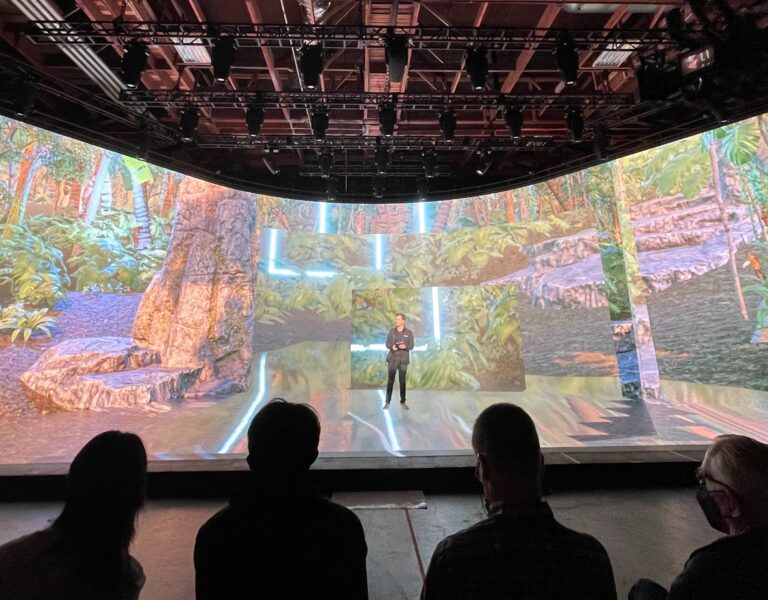With another year of innovation ahead of us, we asked the industry for the key trends that cinematographers should be keeping an eye on in 2023. Here’s what they said!

APUTURE
“The future of LED is still ripe with possibilities. At its core, LED is a light generation technology that can be modified to reproduce varying wide or narrow bands of the colour spectrum. Its ability to adapt to the hyper-specific needs of our industry is one of the technology’s key strengths.
“The versatility of the technology and the fact that every LED fixture is in part a miniature computer also allows for deeper integration with all of the other production tools in our practice. With virtual production or XR growing in prominence, filmmakers are able to unlock new worlds, and they can expect LED manufacturers, like Aputure, to work together with companies involved in the pre, post, and filming phases of production to create a seamless and synchronous workflow that removes technological barriers and focuses on creativity.
“By working together, the tools usually separated by different departments will communicate with each other – real-world LED lighting and their matching digital twins in the virtual space, which in turn must be aligned with environmental tools like the LED walls to emit colours that will appear on camera as matching the real-world elements. As essentially light-emitting computers, data communication between different tools and platforms will allow these fixtures to integrate into the entire workflow.”
– Brandon Le (product marketing manager, Aputure)
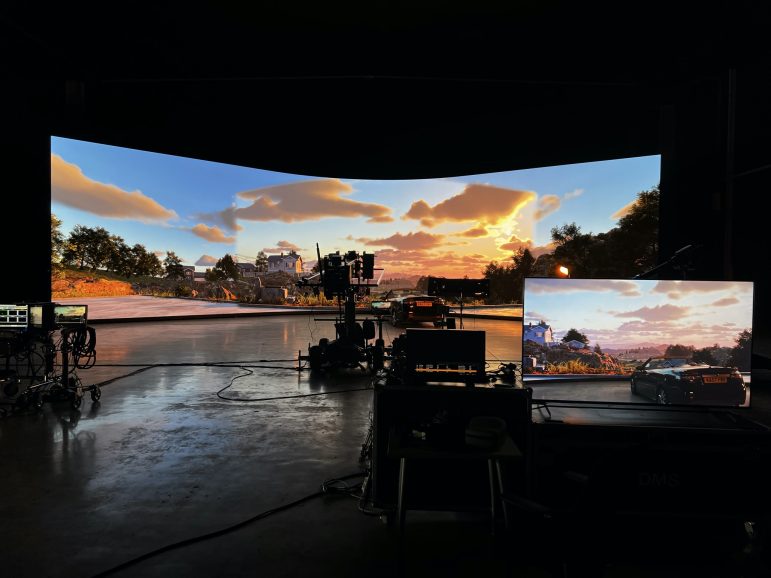
BROMPTON TECHNOLOGY
“2022 saw increasingly demanding requirements from virtual production and the benefits of using LED will continue to be a big driver of technology advances in 2023, with production crews and digital storytellers taking full advantage of its flexibility and freedom.
“Alongside the move towards finer pixel pitches, the critical importance of colour accuracy is increasingly recognised, as studios look for ultra-realistic in-camera visuals where virtual and physical worlds seamlessly merge together. The drive for even better quality recordings will increase the interest in improving the spectral quality of light in situations where panels are contributing to lighting the scene.
“As a manufacturer of LED processing, we work closely with panel makers to deliver further improvements, using new types of LEDs and building on our unique Dynamic Calibration technology, to make content look better than ever. Creatives can look forward to even more control over the presentation of their content, while simplifying the management of colour pipelines.
“Our Tessera software feature set keeps expanding to add more functionality to existing hardware, delivering maximum ROI. In 2023, customers can expect further enhancements to get more performance from their existing panel inventory.
“The performance of LED is getting better and better!”
– Cesar Caceres (product lead, Brompton Technology
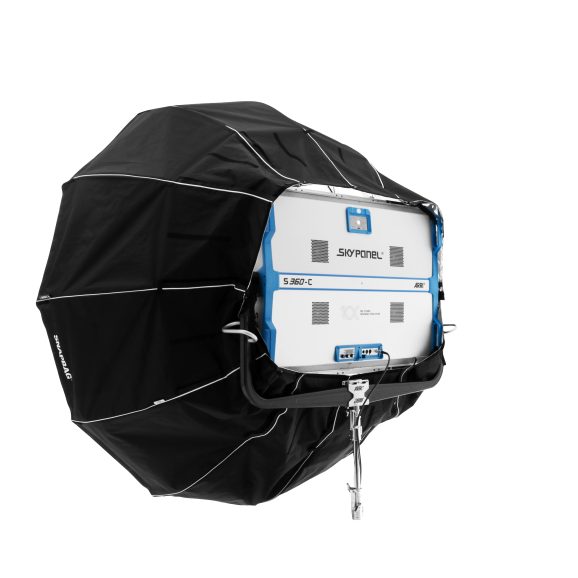
DOPCHOICE
“One thing’s for sure, LED lighting options continue to grow. That’s great for a brand like ours because every type of light can benefit from help with light direction, diffusion, softening and mounting.
“Big is in. Large diffused lights are getting more popular. 2022 saw a proliferation of large sources from many brands, and they all needed light modifying accessories to make the most of them.
“Lighting tube makers like Astera, Litegear, and Sumolight also found clever solutions to add creative lighting functionality by using “pixel mode” and running programmed lighting patterns and video through large arrays for a new method of illumination. Even those lighting walls and overheads benefit from diffusion— our speciality.
“In 2023 the market will see more big, punchy fixtures like COB, spots and panels. We think users will want those to pull double-duty and offer softer lighting too. DoPchoice is working on it.”
– Stefan Karle (managing owner and director, DoPchoice)

HAWKWOODS
“As a battery manufacturer serving the cinematographic community, we have seen several key trends emerge in 2022 that are expected to continue into 2023. One of the most significant trends is the increasing number of 24V cameras that have been released in the past couple of years, with more and more camera manufacturers shifting towards 24V battery systems. This shift is driven by the need to create smaller and more efficient camera packages, as well as the desire to push the limits of image processing quality and high frame rates.
“In addition to this, we have also observed an increasing demand for sustainable and eco-friendly products. Many film and television productions are adopting more environmentally-conscious practices, such as using LED lighting and electric vehicles on set, using high-quality and long-lasting batteries like ours, thus reducing waste, and offsetting carbon emissions. These efforts are expected to continue to gain momentum in 2023 as the industry works to reduce its environmental impact.
“Another major trend in 2022 has been the continuous rise of streaming platforms and the impact this has had on traditional forms of distribution. More and more filmmakers are finding success in sharing their works on these platforms, which have given them the opportunity to reach a wider audience. This trend is expected to continue in 2023 as streaming platforms remain a dominant force in the industry. We will continue to support these brilliant filmmakers with advanced and portable power solutions.
“Finally, virtual production techniques have also became increasingly popular in the past year, allowing filmmakers to create complex visual effects in real-time on set. This technology has the potential to revolutionise the way films and television shows are made and is expected to continue to gain traction in 2023. These new technologies also require high capacity/high performance 24V battery systems.”
– Hazar Kinali (head of sales, Hawkwoods)
LEITZ
“The introduction of ARRI’s LPL mount standard has opened the door to many new lens offerings, old, new and yet to come. LPL uses a 44mm flange depth as opposed to the PL mount’s 52mm. Most camera manufacturers have made this possible by including either shallow depth sub-mounts, or completely replaceable mounts, on their cameras allowing cinematographers many different lens mount format options.
“Designing for a shallower flange depth means the glass has less work to do and lenses can be smaller, faster, lighter, and less expensive. So far Leitz is the only major company other than ARRI to design and produce lenses specifically for LPL with the Leitz ELSIE lenses, however we expect other manufacturers to take the plunge in the future.
“For the vintage and alternative format lens community, the LPL mount makes rehousing older and modern rangefinder and SLR lenses easier as many of these optics originally used shallower flange depths that are difficult or impossible to adapt to 52mm, which was the case with the Leitz HUGO lenses. LPL is also a more rigid locking mount better suited to the rigors of production as opposed to existing SLR and rangefinder mounts.”
– Seth Emmons (director of communications, Leitz)

NANLITE / NANLUX
“By witnessing some major transformations over the past decade, the LED lighting industry certainly takes the lead when it comes to driving innovation and making frequent breakthroughs. One of the trends we have seen emerging is the improved lumen output and efficacy numbers in an further reduced body. The amount of light generated by LEDs increased by around 10% in a more compact and lightweight structure through streamlined mechanical and optical designs coupled with more efficient electronic drivers.
“We also notice that more versatility and portability can be offered at the same time in a single light fixture, which means users can just have minimal setup while still realising multiple lighting effects as before. Our newly released Forza IIs and PavoTube II Cs can be good examples of such innovative developments – Forza IIs output 10% more light in a 10% smaller size with more features packed into the lights, including G/M adjustment that will revolutionise the industry once again.
“In addition to the above, we find that all LED lights tend to be smarter as well – for instance, now most of our new products incorporate an intelligent cooling system that automatically toggle between fan modes by monitoring ambient temperature. In 2023, we will keep exploring and innovating in the field of LED lighting to bring out more advanced and reliable solutions to the industry.”
– Carmel Luo (marketing specialist, Nanlite and Nanlux)

RED LORRY YELLOW LORRY
“One of the biggest things that’s already happening and will grow in 2023 is a diversification of the kinds of technology available to creatives on set. This will be hugely beneficial to directors and DOPs but also the rest of the crew from gaffers to set designers and even on-screen talent.
“Virtual production of course has led the charge in recent years, but what’s next? VP as a toolkit is much more of an intriguing concept, as opposed to just the LED volume concept currently being held as the standard.
“VP isn’t just a VFX thing. Its true benefit is in allowing crews to visualise shots, plan blocking and make creative decisions before committing anything to film. And a key part of that virtual toolkit which will help creatives make more informed decisions will be the deployment of mixed reality technologies.
“Whether working on a VFX-heavy show set in another universe, or working on an apartment set with green screen or LED backdrops, augmented or virtual reality will become more common place on set. It allows anyone to step into the world they’re creating rather than having to imagine what the finished product will look like.”
– Martin Izzard (head of media and entertainment, Red Lorry Yellow Lorry)
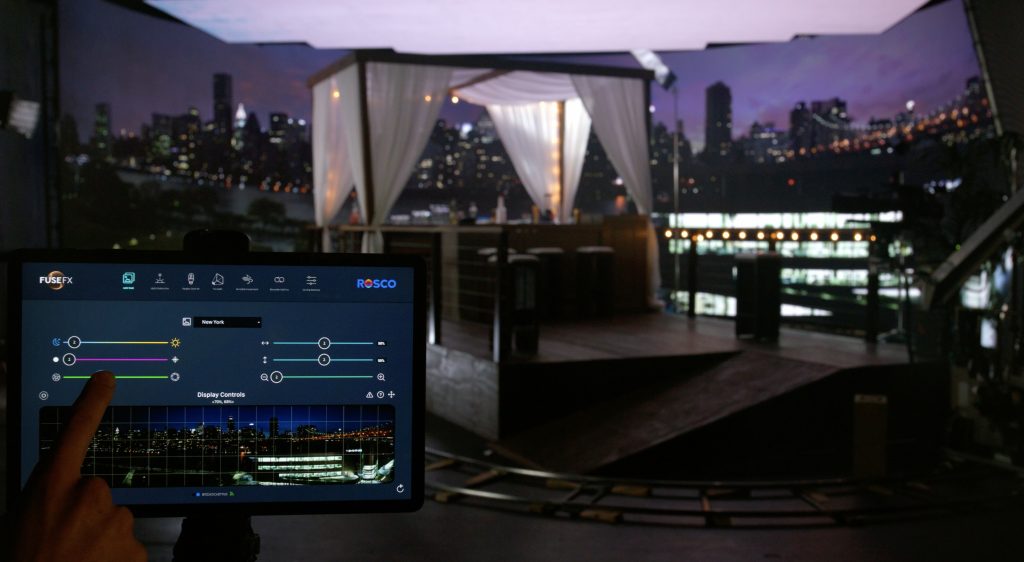
ROSCO LABORATORIES
“In 2023, virtual production will continue to become more accessible for more filmmakers. As a company that works with both cinematographers and production designers, we’ve seen the growth of virtual production first-hand. Until recently, however, shooting inside an LED Volume has been an option for only few productions. There are two budgetary obstacles that have thus far prevented a higher adoption of this technology:
- The high cost of the LED Walls and/or LED Volume rental.
- The high cost of producing the digital content that is displayed on the walls.
“However, the economics will be shifting due to wider adoption. As more Volume stages are built, and we see the increased rental options for LED walls, prices for the technology will be driven down, which addresses the first obstacle. Productions will have greater access to the tech and therefore need more accessible, more turn-key content solutions.
“Rosco is getting ahead of this demand with our RDX LAB System, a user-friendly ecosystem that creates background solutions for virtual production, easily manipulatable on set through a mobile application. We partnered with VFX experts, FuseFX to develop the system, which enables our award-winning day-night backdrop images to be used on LED walls. The system becomes a more affordable solution than custom content and allows for filmmakers to retain creative control that has been missing. Solutions like this will create accessibility to virtual production through lower cost, easier adoption, and greater creative possibilities.”
– Lauren Proud, VP of marketing & digital experience (RDX) at Rosco Laboratories
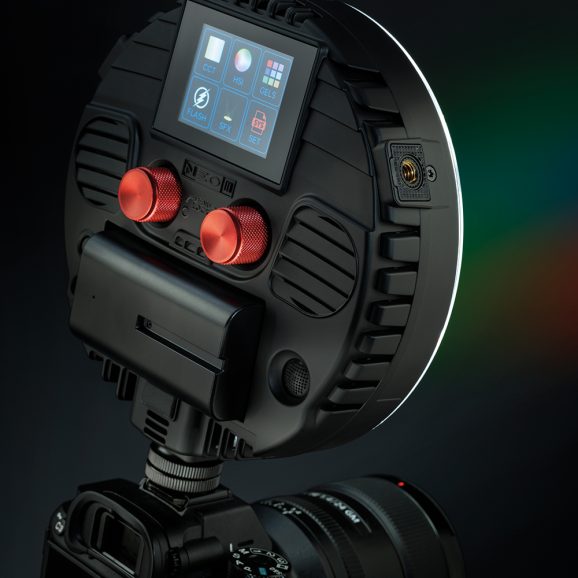
ROTOLIGHT
“There has always been a strong and mutual relationship between technological innovation and filmmaking techniques. Certain styles of lighting have been born in response to technologies that have existed for many years and others have been the result of experiments by ambitious cinematographers, gaffers and lighting manufacturers alike, with the core aim to enhance images, create depth and support a story’s mood and atmosphere in film.
“The result of diverse types of lighting equipment and innovations has expanded the range of lighting methods and effects available to cinematographers.
“The history of film lighting is a complex chronicle of intersecting influences involving technological and aesthetic innovations and the past 12 months have seen some of the boldest steps in lighting innovation in living memory.
“Rotolight’s past year has proved an outstanding period of innovation with market-leading progression from the brand, filmmakers have seen greatly simplified workflows and creative opportunities arriving in abundance with each new product and accessory produced. With unparalleled power and colour selection, native mobile applications, expanded lighting effects, the world-first electronic softbox and a great deal more; the brand has continued to lead where others follow.
“The evolution of film sets is moving at a rapid pace with traditional techniques meeting unreal environments and LED products playing a more and more important role. It is Rotolight’s intention to maintain its market-leading innovation to meet the industry’s needs and always with broadening creative opportunities in mind. Watch this space.”‘
– Rod Aaron Gammons (CEO, Rotolight)
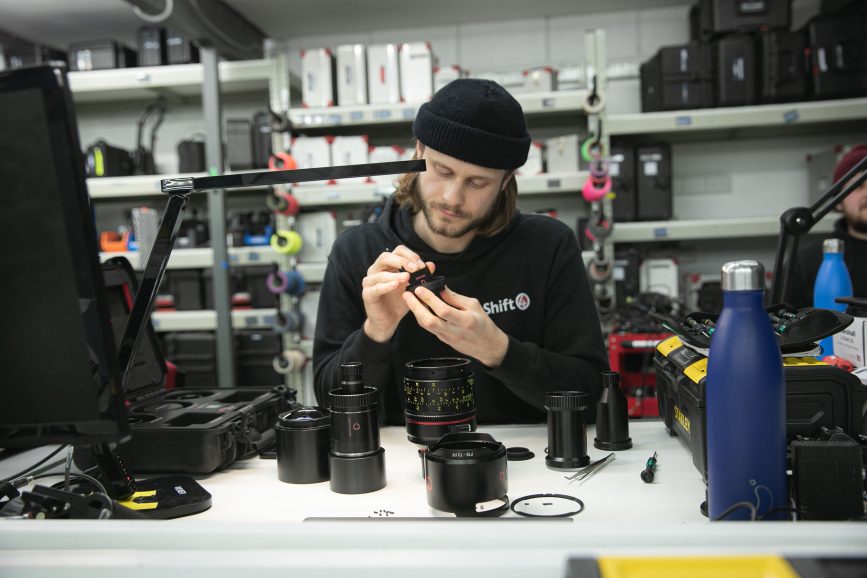
SHIFT 4
“With the release of so many full-frame cameras and lenses in the last few years, one could be forgiven for thinking that the world of cinematography was moving away from the Super 35 format, but with the release of Alexa 35, ARRI is suggesting otherwise and is bringing the format beloved by so many Cinematographers back into focus. The great thing about this is the sheer number of Super 35 cine lenses available in comparison to full-frame, giving Cinematographers and DPs more flexibility when it comes to choosing a look for their projects. And since Alexa 35s sensor is so sensitive – due to its enhanced sensitivity mode – we believe that creatives will now have even more lens options to choose from, because those not-so-fast-lenses that were never an option for some projects can now be considered.
“This links perfectly with another trend we see for 2023: a further influx of glass into the market due to both small lens manufacturers and re-housing enthusiasts. Some spend months and years looking all over the world for specific vintage glass with the aim of getting them re-housed so they can be used on cine cameras. This is because with the advance of digital cine cameras and their sensors, cinematographers and DPs are looking for more options to create that unique look.
“One way they are now able to achieve that is through the customisation of an existing lens, another trend for 2023. With the Angénieux Optimo Primes for instance, which Shift 4 stock, a creative can change the internal filter, the iris blades or add a back filter, modifying completely the original look of those lenses….for instance, one could take the Optimo Primes from a very clean look to a vintage one or even add uncoated elements. Another example of this trend is the recently released HERO series by ARRI.
“Lastly, we believe that 2023 will see a very positive step forward in the number of women making their mark in the camera department. Thanks to initiatives like Women Behind the Camera, Illuminatrix, and a few others, productions are finally realising that gender should play no role when it comes to choosing camera crew. This, we believe, has resulted in a rise in the number of female applicants that would like to work across our branches at Shift 4, finally allowing us to better balance our kitrooms, something we’ve been pursuing for a long time in a number of ways. There is still a lot of work to be done though.”
– Raff Filomeno (marketing manager, Shift 4)
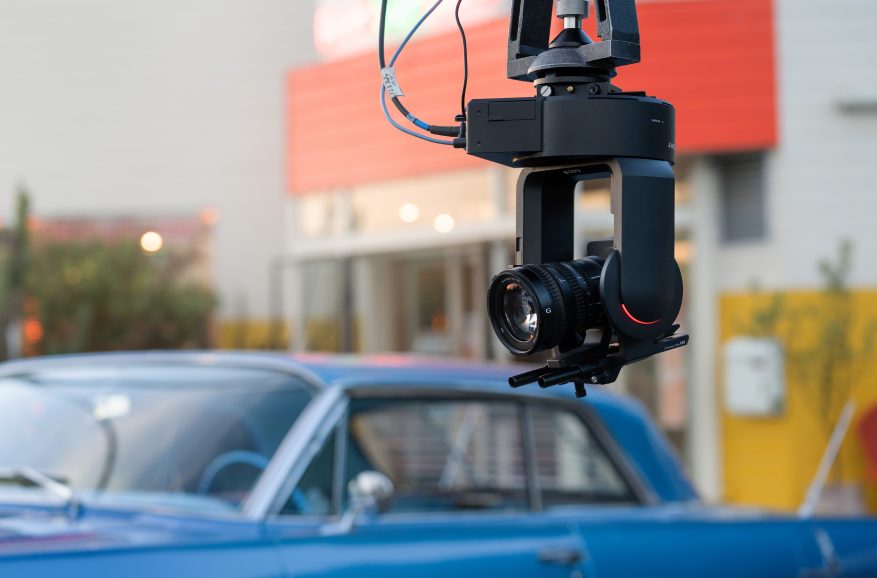
SONY
Cloud and virtual production are also set to dominate the media solutions industry. “Rapidly improving cloud and virtual production technology provides creative freedom to filmmakers efficiently. By being able to create and store high quality content virtually content creators will be able to be more creative in a less expensive and less time-consuming way. One of the main challenges facing creators in 2023 is how much to rely on the cloud, compared to conventional production methods.”
We can expect to see more content creators looking for different camera form factors to create unique angles and feel in their content. “Unique, especially cinematic, feels are one of the ways to add depth and differentiation to content, but form factors can also be a limitation to create different point of view. To answer this, Sony’s FR7 is the first PTZ camera with interchangeable lenses, the perfect camera to add a cinematic feel whilst slotting into existing live production systems. Another example is Sony’s Venice Extension CBK-3610XS, which provides the flexibility of separating the image sensor and body of the camera, allowing new angles to be accessed without compromising on image quality.”
– Olivier Bovis (head of media solutions, Sony)
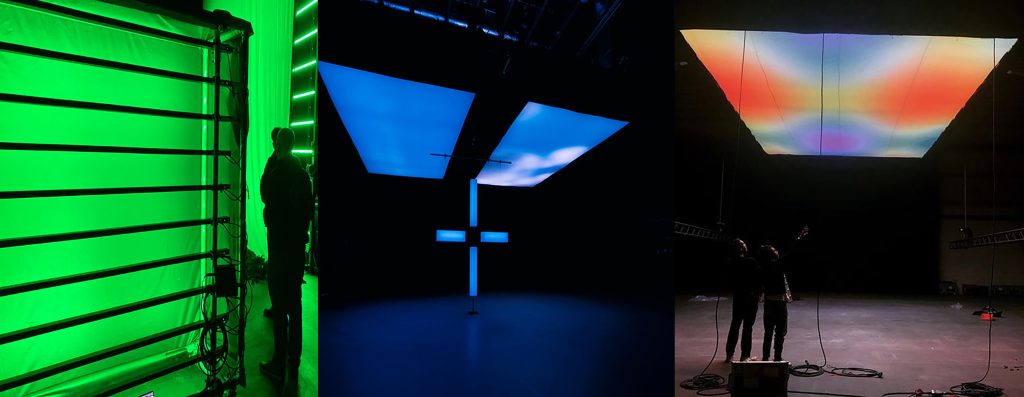
SUMOLIGHT
“High quality lighting has always been an essential element on any production – either in a studio or on location – and with virtual production skyrocketing in 2022, the lighting industry had to rapidly evolve to accommodate new technology and creative processes. The art of lighting is just as vital in an interactive LED environment as it is in traditional cinematography, leading to development and use of specific virtual production lighting solutions.
“Image based dynamic lighting became the buzz word of the production lighting. Interactive lighting fixtures with high pixellation and pixel mapping like SUMOMAX, or VFX backdrop SUMOSKY, with digital green screens among its features, are being used to ease and enhance lighting LED volume stages and productions as well as time and money saving tools for post-production. Development of software-based lighting solutions will keep trending into 2023 as the interactivity of lighting is getting more important.
“Additionally, rigging solutions like SUMOSNAP, Lynx, and Spenny are emerging as fixtures are becoming lighter and being used in arrays. In 2023, new light emitting technologies such as SUMOLASER and other more specific, interactive lighting solutions for live VFX integration and VP will become available. There will be more modular solutions utilising bundles of fixtures making it even easier to adapt for situations where interactive lighting is key.”
– Sascha Jazbinsek (CPO innovations & mechanical design, Sumolight)
TERADEK
“Demand for production streaming and camera-to-cloud workflows became incredibly popular in 2022. Live camera feeds, instant recordings, and live post sessions can now be set up and seen anywhere in the world. Both creatives and studios alike have requested methods for instant visibility, allowing for faster creative decision-making and oversight between production processes. To build these features, tangential software solutions, services, and providers had to be integrated and hardware workflows had to be simplified. The goal is to provide critical colour accuracy from camera output to a remote viewing device (iPad, Apple TV, etc). For instance, a cinematographer can now receive instant proxies via Teradek’s devices and cloud workflow to monitor a feed and quickly colour grade on an iPad while on set or in another country. In 2023, production streaming and camera-to-cloud will become a new standard across the production landscape. “
– Greg Smokler (general manager of cinema for creative solutions, Teradek)
WARNER BROS. STUDIOS LEAVESDEN
“Last year the industry was back in force following the pandemic and the overwhelming trend we saw was the high demand for stages. At WBSL, we used every spare bit of space to host a strong mix of productions from US studios, US streamers and British independents covering tent poles movies, high-end TV and mid budget indies.
“With this demand came the opportunity to host award winning filmmaking talent who chose to work in the UK for the first time. It’s great to see the UK remains a prime location for the global industry and in this regard we see high production volumes continuing in to 2023.
“2022 was also the year that we were delighted to welcome Hugh Whittaker to head up our kit rental division at WBSL and support our very valued clients.”
– Emily Stillman (SVP, Warner Bros. Studios Leavesden)

ZEISS
“In 2022, we witnessed more productions resuming their work on feature films and series, resulting in a demand for high-quality cinematography equipment that was even higher than pre-pandemic levels. Even more interestingly, this also meant an ever-increasing use of visual effects and especially virtual production – with VP studios shooting up everywhere around the world. These new and innovative ways of working generate more and more demand for all sorts of metadata, including lens data that will help in ways such as applying specific lens looks to CGI, pre-visualizing or making workflows on set and in post more precise, reliable, and faster.
“To respond to these developments, Zeiss introduced our new CinCraft ecosystem with a service called Mapper, that enables VFX artists to apply lens distortion and vignetting into their compositing and matchmoving workflows with just a few clicks. These new ways of creating images and incorporating lens data will continue through 2023, changing the way cinematographers, VFX artists and others work even closer in the future to tell their stories.”
– Christophe Casenave (head of products and sales, Cinematography, ZEISS)
What do you think will be the industry’s biggest trends in 2023 and beyond? Drop us a line at helen@britishcinematographer.co.uk if you’d like to share your thoughts in this or a future article.




